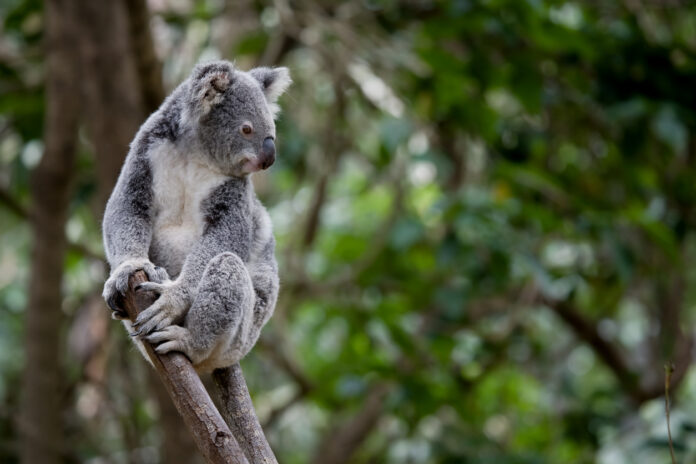Drones are providing a new boost in the fight to protect the region’s koalas.
A parliamentary inquiry in June estimated that 5,000 koalas likely perished in NSW due to the bushfires that ravaged the koala population last year.
Further challenges like climate change, dog attacks, chlamydia disease and habitat fragmentation are all “drivers combining to put pressure on koalas”, University of Newcastle Wildlife Conservation Scientist, Doctor Ryan Witt, said.
He added that, following the parliamentary inquiry, the “understanding of [the] population status is outdated”.
Dr Witt co-authored a pilot study in the Port Stephens area last year to test whether drones could be used to track koalas.
He explained that a pilot flies a drone over the bush, back and forth in a lawn mower pattern, using the drone’s infrared technology to pick up on the heat signals that koalas give off.
If a koala is spotted by the drone, the pilot makes ecologists on the ground aware of a possible koala so that they can validate the sighting in that position.
“Drones are more efficient than any traditional method,” Dr Witt said.
“Previously, [we] relied on systematic spotlighting or scat surveys, which can be very laborious. Drones mean less bushwalking as they help us know where to look.
“Drones can also take photos that can identify a koala’s gender and whether it has chlamydial disease.”
His study found that traditional methods lead to finding one koala every seven hours, whereas drones find one koala every two hours.
Traditionally, ecologists, volunteers and citizen scientists have relied on labour intensive methods to track koalas, such as finding scratches on bark, detecting droppings, and looking in trees.
Drones are currently an emerging technology for monitoring koalas, as are detection dogs and acoustic monitoring.
World Wildlife Foundation Australia Conservation Scientist, Doctor Stuart Blanch, explained that drones would give a “much better understanding” of population statuses.
Dr Blanch believed using drones could aid conservation workers in detecting the really well hidden koalas “cheaply and quickly”, especially in terrain that is difficult to traverse.
Both Dr Witt and Dr Blanch were critical of the NSW Government’s handling of the koala crisis.
Dr Witt said that, if the extinction of the state’s koalas was to be avoided by the 2050 estimate, the NSW Government needed to “make changes pretty fast” to the governing framework surrounding koalas.
Whilst Dr Blanch praised the move to protect habitats through the new State Environmental Planning Policy (SEPP), he added that the NSW Government was “ignoring the skyrocketing rate of deforestation”.
Dr Blanch is an advocate for more “active intervention” to protect koalas, referred to as the ‘panda option’, which he feels is an effort to “iconise” the importance of the ecosystem in which koalas live.
This would be modelled on China’s measures to protect their national symbol, the Giant Panda, which resulted in it being taken off the endangered species list.
A NSW National Parks and Wildlife Service spokesperson said, in response to the Upper House inquiry, Environment Minister Matt Kean set a goal to see koala populations double in NSW by 2050 and had asked the Chief Scientist and Engineer to assemble experts to develop a 30-year plan.
The spokesperson added the NSW Government had committed $44.7 million to support the first phase of the NSW Koala Strategy.
“The NSW Government continues to invest in the development of new technologies that will support better and more effective environmental management,” the spokesperson said.
“Technology is already playing a vital role in monitoring and assisting threatened species from drones to phones, and non-invasive gadgets are helping ecologists and citizen scientists expand their reach.”
The future of Australia’s wildlife conservation could well have a high-tech future.
Dr Blanch said coupling drones with artificial intelligence and machine learning could ensure a “fairly accurate count of animals in the wild”.
He explained that, through making use of advanced algorithms, drones would eventually be able to distinguish between species like kangaroos, wombats, koalas and dingos by better identifying their shapes and heat signatures.
If the extinction of NSW’s koalas is to be avoided by the 2050 estimate, new technology like drones may provide a modernisation to the conservation effort.







